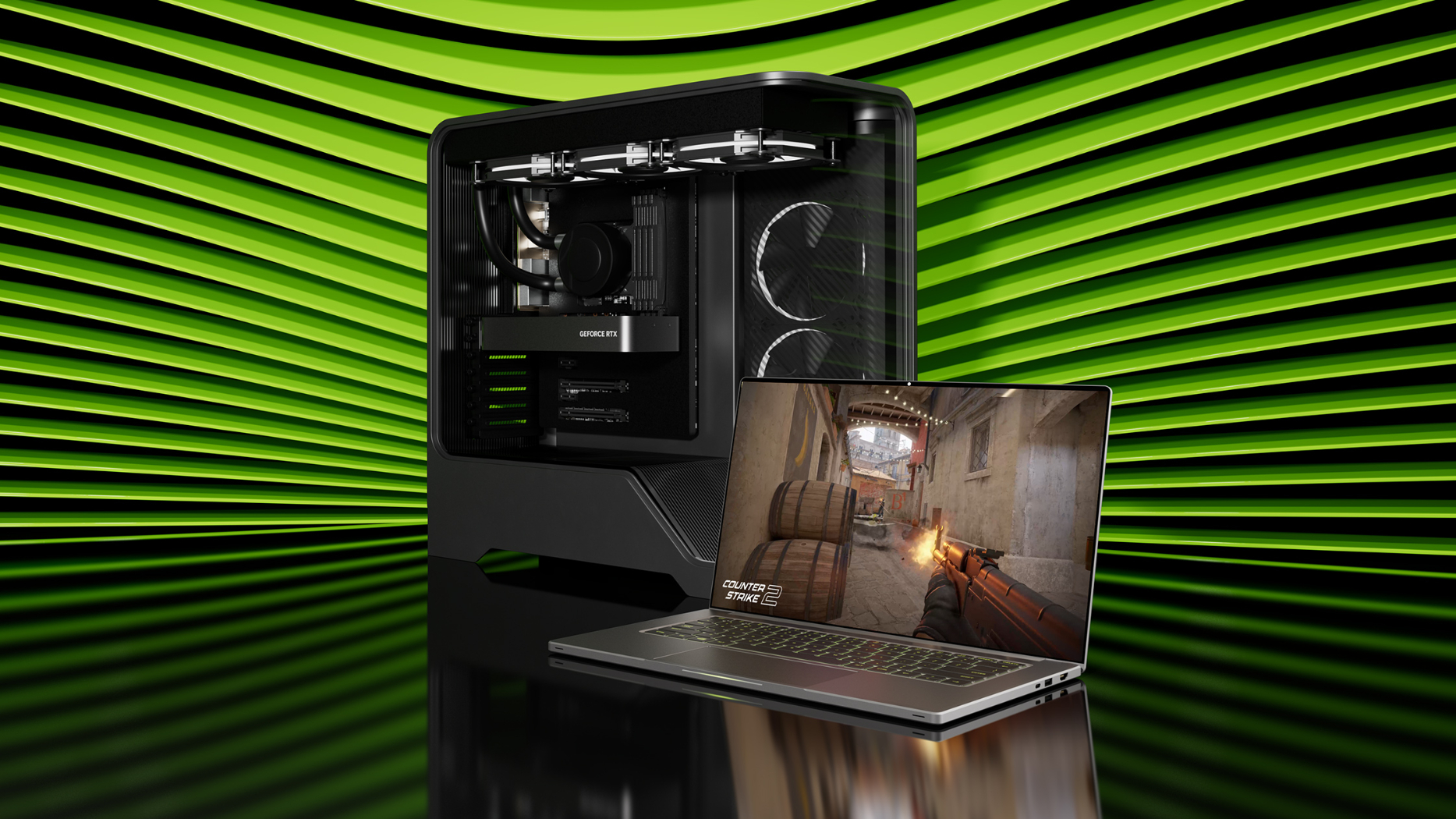
Nvidia's decision to use older GDDR6 memory with its RTX 5050 desktop GPU has taken some by surprise, given that its laptop counterpart features newer and faster GDDR7 memory. Nvidia's director of global PR, Ben Berraondo, responded to Hardware Cannuck's on X, defending Nvidia's usage of GDDR6 in the RTX 5050 desktop card, claiming GDDR7 is the "...best choice for laptops."
Bernado says that the RTX 5050 series presents a special case where GDDR6 is more beneficial on the desktop version, and GDDR7 is more beneficial on the laptop version, rather than having both powered by GDDR7. He explained that the memory type's lower thermals and greater power efficiency are why the mobile RTX 5050 features GDDR7, while the desktop version does not.
The RTX 5050 notebook GPU has been optimized for the best power efficiency for portable laptops with great battery life. Therefore G6 is the best choice for desktops and the more power efficient G7 is the best choice for laptops.June 25, 2025
In this case benefits of G7 are for thermals and battery life, crucial for our OEM partners and hopefully you’ll see some great laptop optionsJune 25, 2025
For those not up to speed, the desktop and laptop variants of the RTX 5050 feature largely identical hardware specifications, featuring 2,560 CUDA cores, 8GB of memory capacity, and a 128-bit memory interface. Where they differ is in the use of different generation GDDR memory, clock speeds, and power targets.
Berraondo neglected to share any advantages GDDR6 offers to the desktop version of the RTX 5050 (if any). Only mentioning that "...G6 is the best choice for desktops". GDDR6 has no apparent advantage over GDDR7 in terms of raw specs, so it would be interesting to hear more of Berraondo's thoughts on the matter. It's fair to assume that cost would also weigh into this decision.
There is no reason for Nvidia to use GDDR6 from a pure performance perspective. GDDR7 is not only more thermally and electrically efficient (allegedly) but also provides significantly more bandwidth than the fastest GDDR6 modules. The fastest GDDR6 speed bins currently available on the market are rated at 20 Gbps. GDDR7 provides 40% more bandwidth than GDDR6, with the slowest modules operating at 28Gbps. (The RTX 5080's GDDR7 is even faster, running at 30Gbps.)
It is likely Nvidia chose GDDR6 on the desktop RTX 5050 for cost-saving reasons and possibly better supply chain availability. Nvidia uses GDDR7 on all of its other RTX 50 series GPUs, including the high-in-demand RTX 5090. Using GDDR6 on the RTX 5050 desktop GPU allows Nvidia to prioritize its GDDR7 supply to higher-end GPUs, assuming GDDR7 supply chains are strained.
There is also a chance that Nvidia did not need to use GDDR7 on the desktop RTX 5050, regardless of availability or pricing. The GPU has so few CUDA cores (only 2,560 cores) that it might be compute-limited with GDDR7.
Regardless, for unknown reasons, Nvidia has opted to use GDDR6 for the desktop version. The desktop RTX 5050 arrives later next month, starting at $249.
Follow Tom's Hardware on Google News to get our up-to-date news, analysis, and reviews in your feeds. Make sure to click the Follow button.







